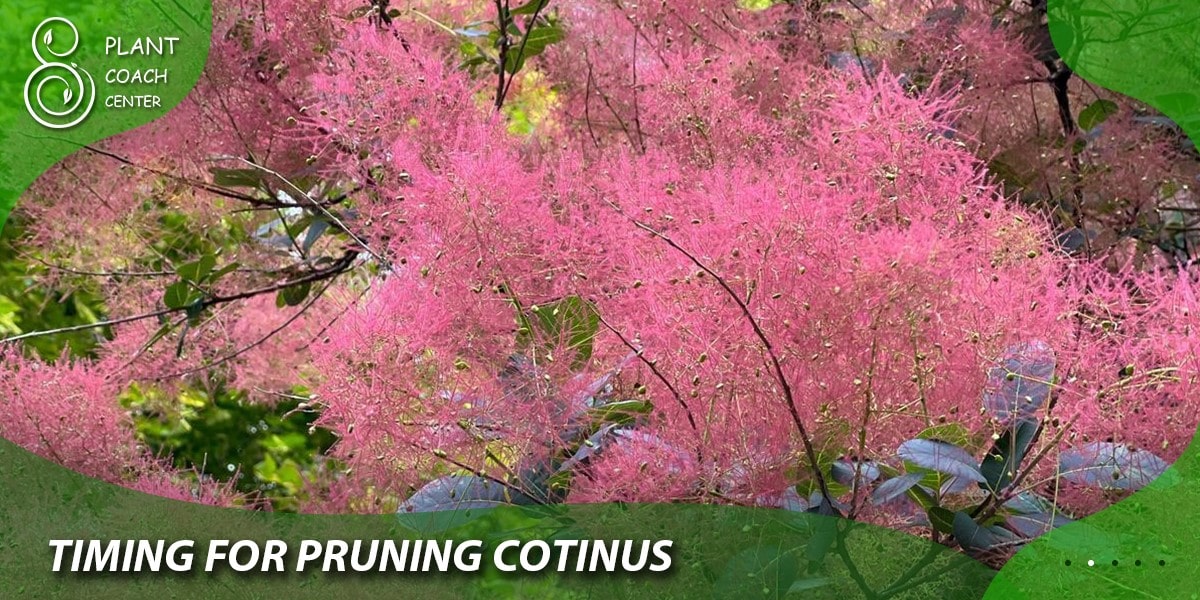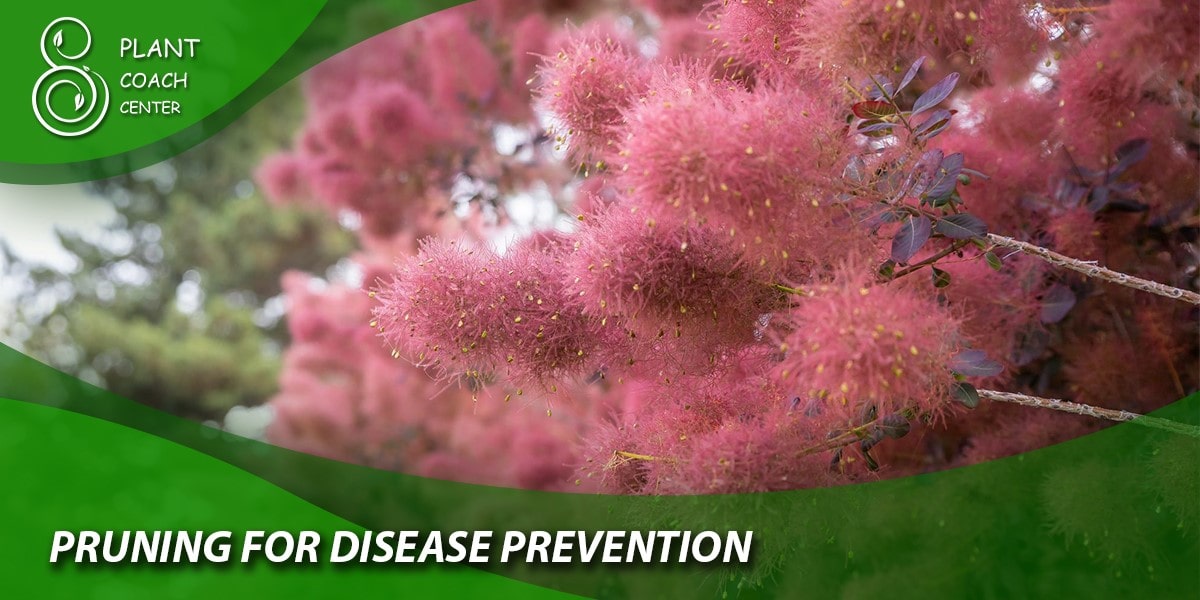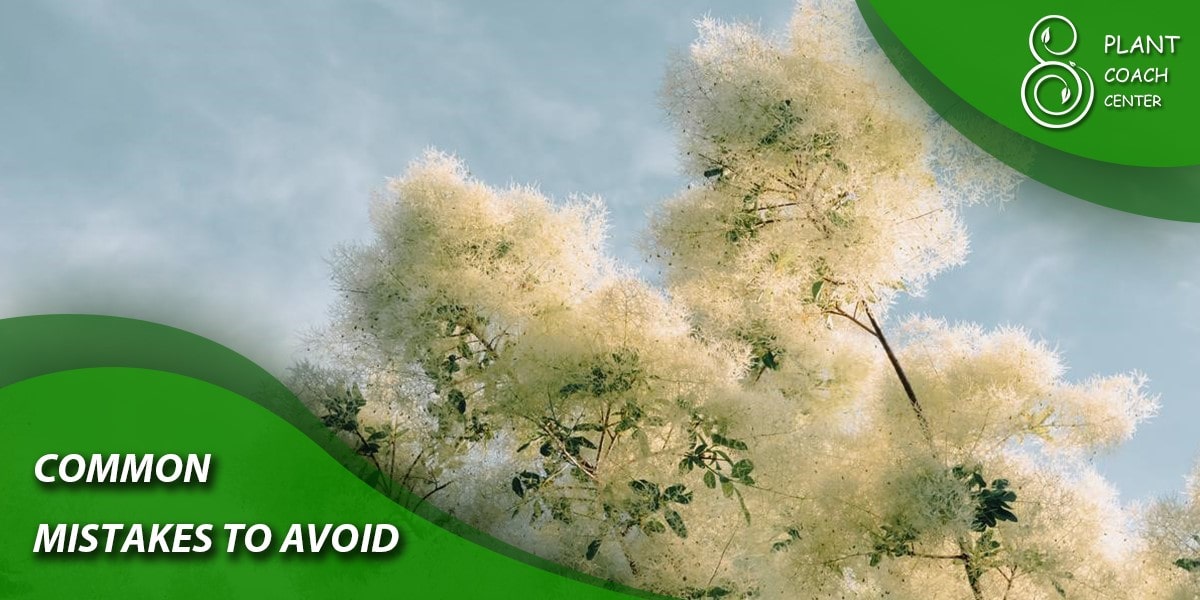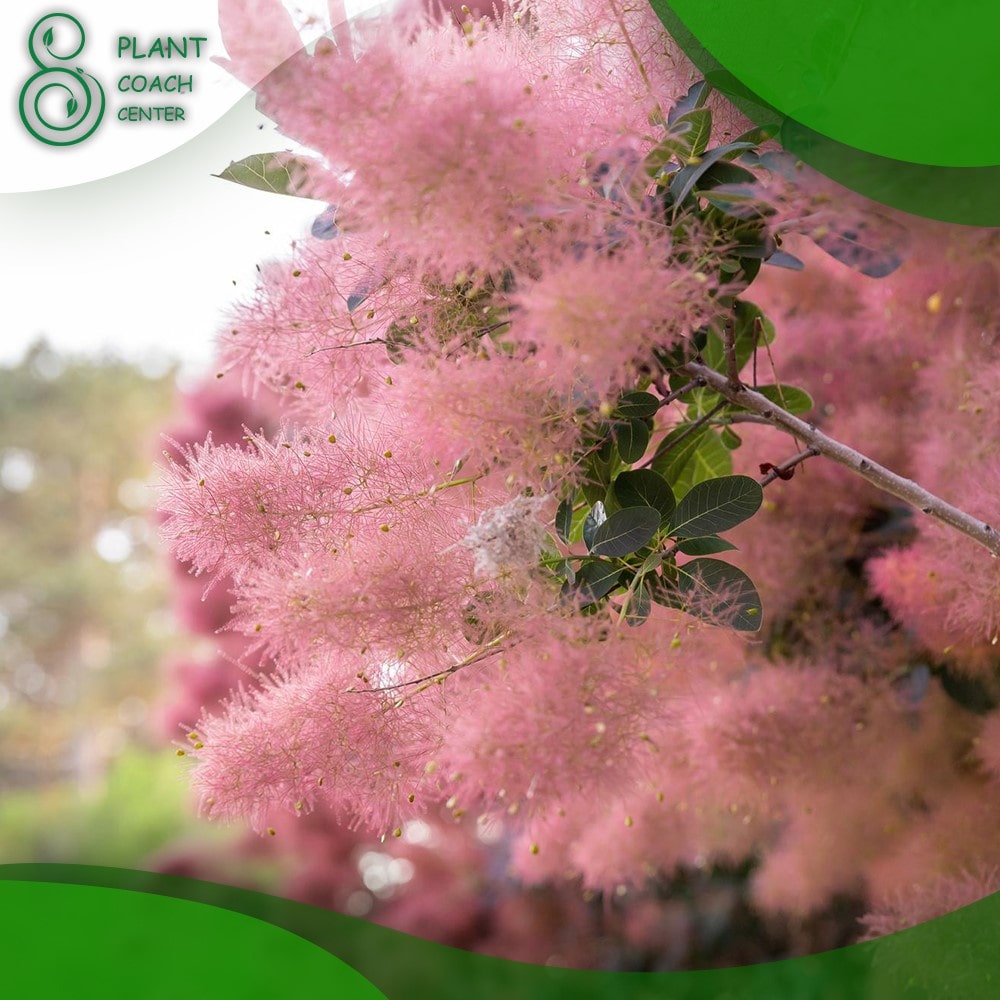Introduction to When to Prune Cotinus
Welcome to the world of Cotinus, commonly known as Smokebush. In plantcoachcenter.com, we’ll delve into the art of Cotinus pruning, focusing on one critical aspect – timing. Timing isn’t just a suggestion; it’s the key to nurturing your Cotinus to its full potential. Cotinus, with its vibrant foliage and delicate plumes, is a showstopper in any garden. However, to ensure its health and beauty, you must understand the when and why of pruning. Timing can make or break your Cotinus, affecting its overall vitality, flowering, and shape.
In the following sections, we’ll explore the optimal moments for pruning Cotinus, considering factors such as seasons, climate, and the age of your plant. By the end of this guide, you’ll have the knowledge needed to trim your Cotinus with confidence, ensuring it thrives year after year. So, let’s dive in and uncover the secrets of when to prune Cotinus.

Timing for Pruning Cotinus
The Ideal Time for Pruning Cotinus
When it comes to the delicate art of Cotinus pruning, timing is everything. The sweet spot for pruning Cotinus is during the transition from late winter to early spring, a period when the plant is still dormant but showing signs of awakening. This is the opportune moment to get your pruning shears ready.
In late winter, Cotinus remains in a state of dormancy, conserving energy as it braves the cold. Pruning during this period avoids interfering with its active growth phase in spring, ensuring minimal stress on the plant. The absence of leaves during this time also provides a clear view of the Cotinus structure, making it easier to identify which branches require attention.
Factors Influencing the Timing Decision
Climate and Weather Considerations: While late winter to early spring is the general rule, it’s essential to adapt your pruning schedule to your local climate. Warmer regions might see Cotinus stirring earlier, while colder climates may delay its emergence. Keep an eye on your local weather forecast and follow the cues from your Cotinus to pinpoint the perfect pruning time.
Plant Maturity: The age of your Cotinus plays a pivotal role in determining when to prune. Younger plants are more flexible and forgiving, allowing for slightly earlier pruning if needed. Mature Cotinus, on the other hand, should strictly adhere to the late winter to early spring window to prevent compromising their established structure.
Exceptions and Special Cases
In the world of gardening, exceptions do exist. Some Cotinus varieties or specific growing conditions may require tailored timing strategies. For instance, if you encounter a situation where your Cotinus has suffered severe winter damage, it’s wise to address the damage promptly, even if it’s not quite late winter yet. Similarly, if you’re cultivating a Cotinus as a container plant, its growth patterns may differ, necessitating unique timing considerations.

In the following sections, we’ll explore the nuances of recognizing when it’s the right moment to prune your Cotinus, keeping in mind these critical factors. As we’ll see, mastering the timing is the first step toward a thriving and resplendent Cotinus.
Signs It’s Time to Prune
Visual Cues Indicating Pruning Readiness
Knowing precisely when to prune your Cotinus can be as simple as paying attention to the plant’s visual signals. Your Cotinus will provide hints that it’s ready for a trim, and these cues are your guiding lights:
Buds Swelling: As late winter transitions into early spring, take a close look at your Cotinus branches. If you notice buds swelling and preparing to burst forth with new leaves, this is a clear sign that the plant is gearing up for its active growing season. It’s an optimal time to prune, as the plant is about to invest energy into new growth.
Foliage Emerging: Keep a watchful eye for the first hints of foliage emergence. Tender, young leaves sprouting from the branches signal that your Cotinus is emerging from dormancy. This is a prime time to shape and sculpt your plant, as it will quickly direct resources towards the new foliage, benefiting from your pruning efforts.
Monitoring Plant Growth Cycle
Understanding your Cotinus’s growth cycle is akin to reading its biological clock. Here’s what to keep in mind:
Dormant Phase: Cotinus goes dormant in late fall and remains that way through winter. During this phase, it conserves energy and experiences minimal growth.
Awakening Phase: Late winter is when Cotinus starts stirring from its slumber. This is a critical phase, as it prepares for a burst of growth in spring. Pruning during this awakening phase avoids interrupting active growth.
Active Growth: Once your Cotinus has fully embraced spring, it enters a phase of robust growth. Pruning during this period may lead to stress and resource allocation issues, so it’s best avoided.

Identifying Dead or Diseased Branches as an Urgent Pruning Need
Pruning isn’t solely about timing; it’s also about addressing immediate concerns. Dead or diseased branches are like a ticking time bomb for your Cotinus. They not only hinder overall plant health but can also become entry points for pests and diseases. Therefore, they require prompt attention, regardless of the season.
To identify these problematic branches:
Inspect for Deadwood: Dead branches are often brittle, devoid of foliage or buds, and display a grayish or brownish color. They may also snap easily when bent.
Look for Disease Signs: Diseased branches might exhibit discoloration, oozing sap, or unusual growths. Fungus or pests may also be evident.
In conclusion, knowing when to prune your Cotinus involves a keen observation of visual cues, synchronization with the plant’s growth cycle, and immediate action when it comes to dead or diseased branches. By combining these factors, you’ll become a Cotinus pruning expert, ensuring your plant’s continued health and vitality.
Pruning for Disease Prevention
Pruning your Cotinus with an eye toward disease prevention is a vital aspect of plant care. Diseases can strike any plant, including Cotinus, and can be a significant threat to its health and overall appearance. Proper pruning timing plays a crucial role in reducing the risk of disease and maintaining a thriving Cotinus.
Timing Matters for Disease Prevention:
Early Detection: Pruning during the late winter to early spring period provides an excellent opportunity for early disease detection. As your Cotinus begins to awaken from dormancy, it’s easier to spot signs of infection or fungal growth on branches and leaves. Identifying and removing affected areas promptly can stop the disease from spreading.
Increased Air Circulation: Pruning during the ideal timeframe allows you to thin out crowded branches and foliage. This, in turn, promotes better air circulation throughout the plant. Improved airflow helps to reduce humidity around the Cotinus, making it less hospitable for moisture-loving diseases like powdery mildew or fungal infections.

Stress Reduction: Proper timing ensures that pruning doesn’t coincide with the active growth phase. Pruning during active growth can stress the plant, making it more vulnerable to diseases. By pruning during dormancy or the awakening phase, you minimize this risk, allowing your Cotinus to focus on building its natural defenses.
Preventing Cross-Contamination: When you prune your Cotinus, especially if you suspect a disease issue, it’s essential to disinfect your pruning tools between cuts. This practice prevents the inadvertent spread of pathogens from one part of the plant to another. Properly cleaned tools reduce the risk of cross-contamination and reinfection.
Signs of Disease for Pruning Consideration:
Discolored or Spotted Leaves: Yellowing, browning, or unusual spots on Cotinus leaves can be indicative of diseases like rust or fungal infections. Prune affected leaves and branches immediately to prevent further spread.
Unusual Growth or Lesions: Any unusual growths, lesions, or cankers on the Cotinus branches should be promptly removed. These can be entry points for pathogens, and swift pruning can thwart disease progression.
Mold or Mildew: Powdery mildew, a common issue in humid conditions, manifests as white, powdery spots on leaves. Prune affected areas to prevent it from spreading.
Dieback: Sections of the Cotinus with dieback, where the branches and leaves are withering or dying, should be cut back to healthy tissue to prevent the disease from advancing.
Maintenance as a Preventative Measure:
Incorporating regular pruning as part of your Cotinus maintenance routine not only enhances its appearance but also reinforces its defenses against diseases. By staying vigilant, observing your plant for signs of disease, and taking timely action, you can effectively prevent many common ailments that can afflict Cotinus. Remember that disease prevention is not just about the act of pruning; it’s about proactive care and attentiveness to your plant’s health throughout the year.
In summary, pruning for disease prevention is a proactive measure that leverages the right timing, early detection, and attentive care to keep your Cotinus healthy and disease-free. By following these guidelines and monitoring your plant’s well-being, you can enjoy a vibrant and thriving Cotinus in your garden for years to come.

Common Mistakes to Avoid
Timing-Related Errors in Cotinus Pruning
Pruning Too Early
Pruning Cotinus prematurely, before the late winter to early spring window, is a common pitfall. Doing so risks disturbing the plant while it’s still in its dormant phase. Pruning during dormancy can lead to excessive stress, hampering the Cotinus’s ability to flourish during its active growth phase in spring. Avoid this mistake by exercising patience and waiting for the appropriate time, even if the urge to trim strikes earlier.
Pruning Too Late
Conversely, postponing your Cotinus pruning beyond the late winter to early spring timeframe can be equally detrimental. Waiting too long can coincide with the onset of active growth, causing unnecessary shock to the plant. Late pruning may also result in the loss of flower buds, diminishing the Cotinus’s ornamental appeal for the current season. To prevent this error, mark your calendar and act promptly when the time is right.
Neglecting to Remove Dead or Diseased Branches Promptly
One of the gravest errors is neglecting the swift removal of dead or diseased branches. These are ticking time bombs, posing risks not only to the affected parts but potentially spreading issues to the entire Cotinus. Timely removal of dead or diseased branches should be a top priority, regardless of the season, to safeguard the overall health of your plant.
Consequences of Improper Timing
Pruning Cotinus at the wrong time can have far-reaching consequences:
Reduced Flowering: Pruning too late may result in the loss of flower buds for the current season, diminishing the plant’s visual appeal.
Stress and Stunted Growth: Pruning during the active growth phase can stress the Cotinus, diverting energy away from healthy growth, potentially leading to stunted development.
Increased Vulnerability: Improperly timed pruning can make your Cotinus more susceptible to pests and diseases, as well as environmental stressors.
Aesthetic Compromise: Inconsistent or poorly timed pruning can compromise the plant’s overall shape and appearance.
In summary, steering clear of these common timing-related mistakes in Cotinus pruning is pivotal. Proper timing ensures minimal stress on the plant, maximizes its aesthetic potential, and maintains its health. By avoiding these pitfalls and understanding the importance of timing, you can nurture a thriving and visually captivating Cotinus in your garden.

Benefits of Timely Pruning
Improved Flowering and Foliage
Timely pruning of your Cotinus, during the late winter to early spring window, yields a bountiful harvest of benefits. Perhaps the most visually rewarding of these is the enhancement of flowering and foliage. By carefully removing dead or crowded branches and shaping the plant, you encourage the Cotinus to allocate its energy towards the development of robust and vibrant foliage. This focus on new growth is key to achieving the mesmerizing displays of smoky plumes and lush leaves that Cotinus is renowned for.
When you prune at the right moment, you ensure that no precious resources are wasted on unnecessary growth, such as unproductive or diseased branches. Instead, the Cotinus channels its vitality into the parts that truly matter, making each leaf and flower more resplendent than the last. The result? A Cotinus that consistently astonishes with its exquisite appearance throughout the growing season.
Maintaining Desired Shape and Size
Pruning at the appropriate time also allows you to sculpt your Cotinus to meet your aesthetic preferences. Whether you seek a compact, neatly rounded shape or prefer a more natural, open form, timing your pruning activities correctly is the foundation of achieving your desired plant shape and size.
By intervening during the dormant phase and before vigorous spring growth begins, you can make precise adjustments to the plant’s structure. This not only enhances its appearance but also ensures that it fits harmoniously into your garden landscape. It’s akin to giving your Cotinus a well-tailored suit – a perfect fit that complements its natural beauty.
Promoting Overall Plant Health Through Proper Timing
Beyond the visual delights, there’s another, often underestimated advantage to timely pruning – the promotion of overall plant health. When you adhere to the late winter to early spring pruning schedule, you minimize the stress inflicted on your Cotinus. This crucial reduction in stress levels allows the plant to maintain its strength and resilience.
Cotinus that is pruned at the right time is better equipped to fend off pests, diseases, and environmental challenges. It can allocate its resources efficiently, directing energy towards growth and defense mechanisms. This holistic approach to plant health not only ensures a more vigorous and resilient Cotinus but also reduces the need for chemical interventions and costly treatments.
In summary, the benefits of timely Cotinus pruning extend far beyond aesthetics. Proper timing brings about improved flowering and foliage, maintains your desired shape and size, and bolsters the overall health of your cherished plant. By mastering the art of timing, you unlock the full potential of your Cotinus, creating a garden masterpiece that thrives in both form and function.

Conclusion
In the realm of Cotinus pruning, the timing proves to be the linchpin for a thriving, healthy plant. As we’ve ventured through the intricacies of when to prune Cotinus, it’s evident that the art of timing can transform your garden from ordinary to extraordinary. It’s the difference between merely having a Cotinus and witnessing its full splendor.
We urge every gardener to embrace the importance of adhering to the appropriate timing guidelines. Doing so bestows upon your Cotinus the gift of vitality, with lush foliage and ethereal plumes that grace your garden. This timing-driven care ensures that your Cotinus maintains its desired form, effortlessly blending into your garden’s visual tapestry. By following these principles, you become not just a gardener, but a masterful conductor, orchestrating the Cotinus’s symphony, ensuring its enduring magnificence for seasons to come.
FAQs
When is the best time to prune Cotinus?
Late winter to early spring.
Can I prune Cotinus during its active growth phase?
It's best to avoid pruning during active growth.
What should I do if I spot diseased branches on my Cotinus?
Remove them promptly to prevent disease spread.
Does pruning Cotinus improve flowering?
Yes, timely pruning enhances flowering.
How often should I prune my Cotinus?
Yearly pruning during the optimal timing is usually sufficient.
Can I use regular garden shears for Cotinus pruning?
Yes, but clean and sharpen them for precise cuts.






